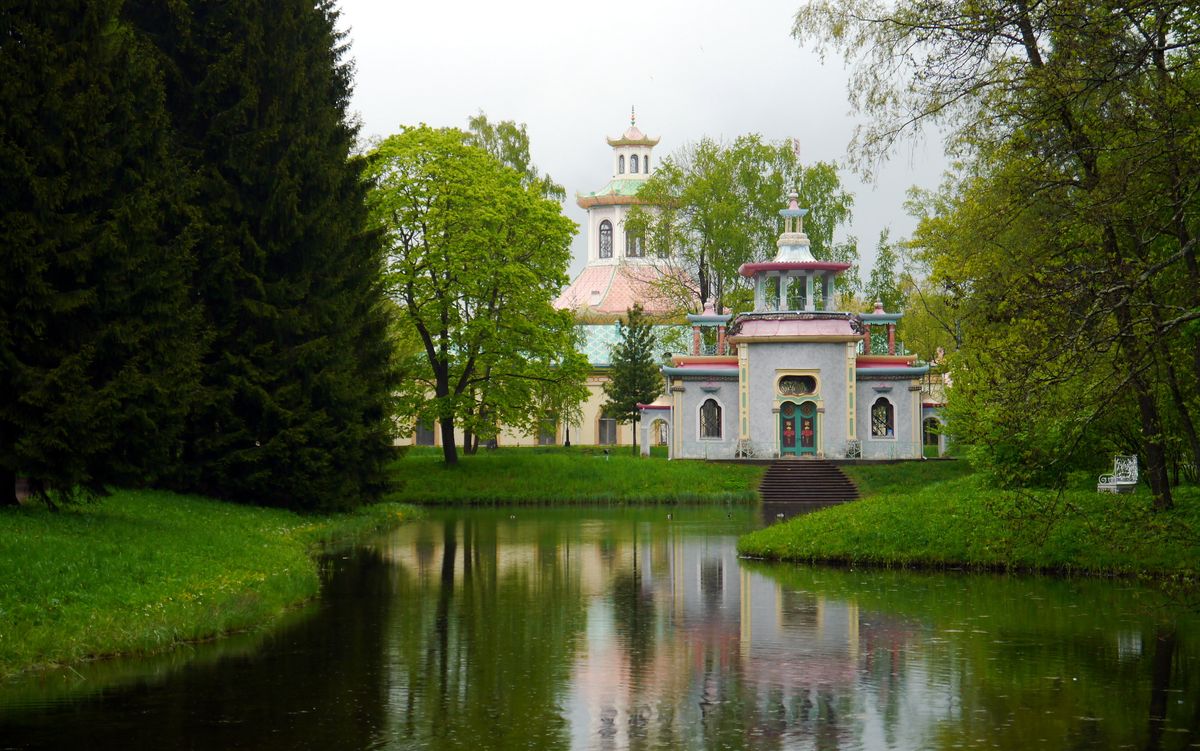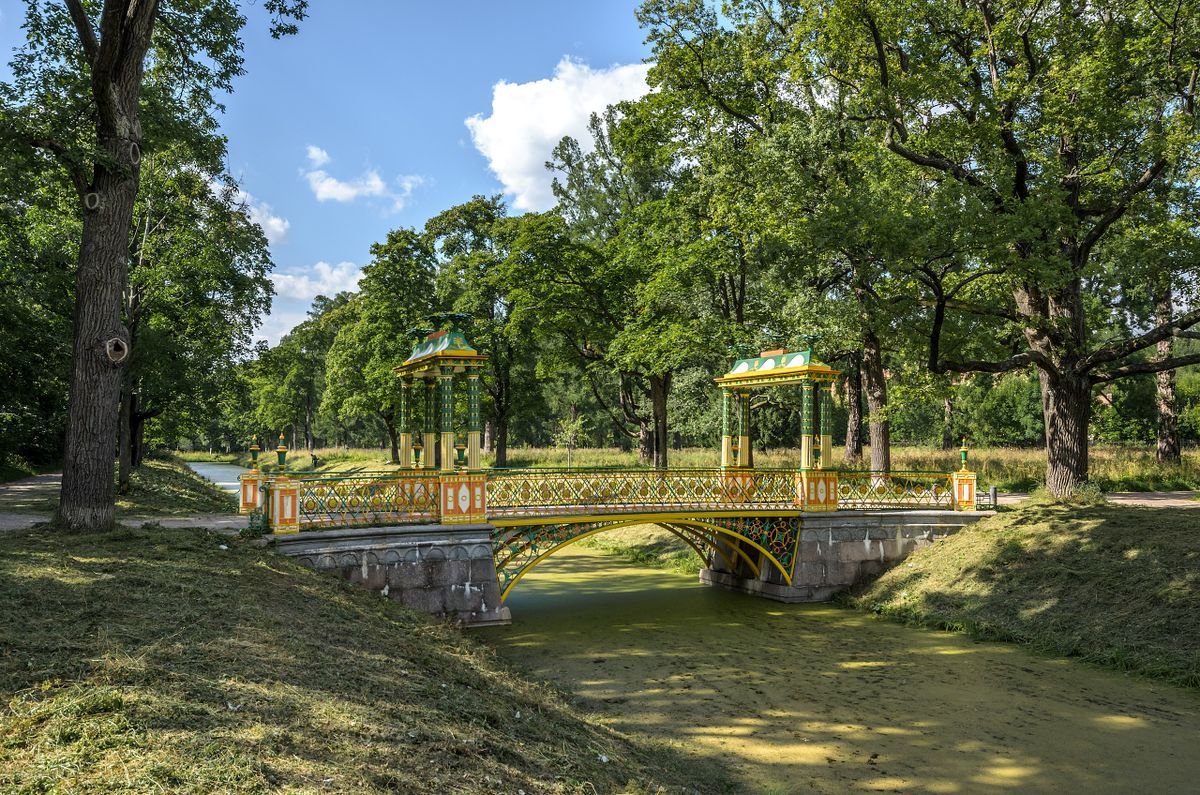About
The palatial complex at Tsarskoe Selo has long held an important position in Russian history. As one of the main countryside retreats of the Tsars, it is located just outside of St. Petersburg and is the site of numerous palaces, gardens, and even at one point a zoo. It served as the last bastion of refuge for Nicholas II and his family during the Russian Revolution. The oddest part of the entire complex, however, is without a doubt the Chinese village.
Construction on the village began during the reign of Catherine the Great. At the time it was fashionable in Europe to emulate Chinese artistic styles. Chinese porcelain was highly prized and imitated by the aristocracy of Western Europe, and Chinese architecture was incorporated into both the interior and exterior of homes and gardens. Called the Chinoiserie movement, it began in France around the mid-1700s.
Catherine was keen to emulate her Western royal counterparts and ordered the design and construction of eighteen separate buildings, all of which were in the Chinoiserie style. Two of the most prominent architects of the day, Antonio Rinaldi and Charles Cameron, designed the village.
Unfortunately before the village could be fully completed Catherine died, in 1796. Her death, and the subsequent drying up of funds for the completion of the village led to it not being finished until 1818. Even then, only ten of the original eighteen structures were erected.
One of the most interesting features of the village is the Chinese Opera Theatre. It was a fully functioning performance space which served as the site of several premieres, including Leo Tolstoy’s The Fruit of Enlightenment.
Like the vast majority of monuments and sites associated with the Russian monarchy, the Chinese village fell on tough times during the Soviet years. The Tsarskoe Selo complex was renamed as the town of Pushkin after the fall of the Romanovs. It was damaged by the Nazi occupation during the Second World War, although thankfully not completely destroyed. Since the fall of the Iron Curtain, the village has been at least partly restored and used as a place to house VIP guests.
2015 update: The Chinese Village is now privately owned & not open to the public. It is walled, and not much is visible from the public area that adjoins it.
Related Tags
Know Before You Go
Located on the Grounds of Tsarskoe Selo (now called Pushkin) outside of St. Petersburg
Community Contributors
Added By
Published
July 13, 2010



























